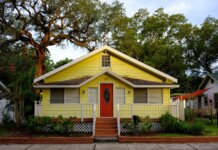han 12% of borrowers are not current on their mortgages, and the effects of the recession and unemployment rates are pushing more prime fixed-rate mortgages into foreclosure, according to the Mortgage Bankers Association (MBA). Foreclosure actions were initiated on 1.37% of first mortgages during the first quarter of 2009, which is a 29 basis point (bp) increase over the fourth quarter of 2008. Both the level of foreclosures started and the size of the quarter-over-quarter increase are record highs. According to the MBA's National Delinquency Survey, the delinquency rate for mortgage loans on one-to-four-unit residential properties was 8.22% on a non-seasonally adjusted basis. After accounting for a variety of seasonal factors, the adjusted delinquency rate was 9.12% of all loans outstanding as of the end of the first quarter of 2009, up 124 bp from the previous quarter. The percentage of loans in the foreclosure process at the end of the first quarter was 3.85%, an increase of 55 bp from the fourth quarter of 2008. Jay Brinkmann, MBA's chief economist, called the foreclosure increase "sobering but not unexpected." Moratoria imposed by Fannie Mae and Freddie Mac, as well as by several financial institutions, have kept levels artificially low, he explains. "Now that the guidelines of the administration's loan modification programs are known, combined with the large number of vacant homes with past due mortgages, the pace of foreclosures has stepped up considerably," Brinkmann says. The foreclosure rate on prime, fixed-rate mortgages has doubled in the last year, he says. And for the first time since subprime lending first began its rise, prime fixed-rate loans represent the largest share of new foreclosures. "In addition, almost half of the overall increase in foreclosure starts we saw in the first quarter was due to the increase in prime fixed-rate loans," Brinkmann adds. "More than anything else, this points to the impact of the recession and drops in employment on mortgage defaults." Four states – California, Florida, Arizona and Nevada – continue to have a disproportionately large impact on national foreclosure numbers, and Brinkmann says overstating the impact of price declines in the states is difficult. "Those states continue to account for about 46 percent of the foreclosure starts in the country, and represented 56 percent of the increase in foreclosure starts, including half of the increase in prime fixed-rate foreclosure starts," he comments. Default levels likely will not improve until unemployment levels drop, according to the MBA, which forecasts the unemployment rate to hit its peak in mid-2010. "Since changes in mortgage performance lag changes in the level of employment, it is unlikely we will see much of an improvement until after that," says Brinkmann. SOURCE: Mortgage Bankers Asso
Subscribe
0 Comments












